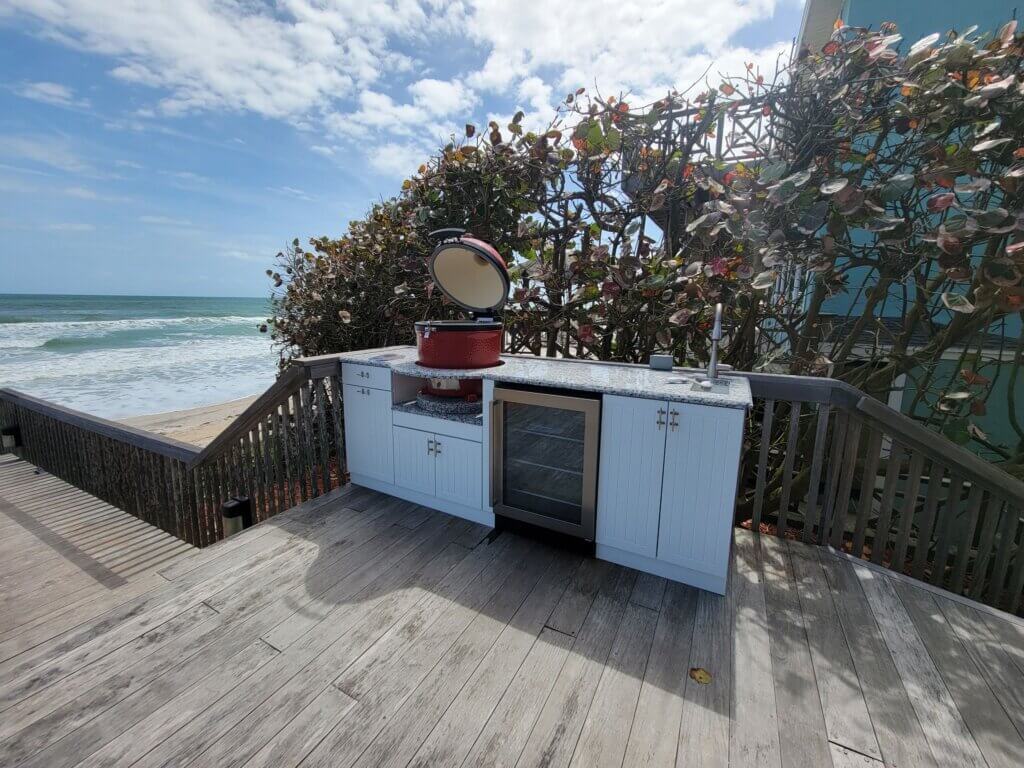
Designing the perfect outdoor kitchen isn’t just about choosing your favorite appliances, counters, and accessories. You also need to take your climate into account. Coastal regions are wetter and have higher humidity, while also coping with salt in the atmosphere from the oceanic waters. This presents new challenges that require you to reconsider the materials used to construct your new outdoor cooking space.
Here are five things you should know about buying outdoor appliances in coastal regions.
Choose beach friendly materials
That salt water and salt filled humidity coming off of the ocean can do a lot of damage to counters, cabinets, and appliances in your outdoor kitchen. Getting the right items of the right construction will ensure that your coastal outdoor kitchen will last for many years with appropriate care.
Werever uses UV-stabilized High Density Polyethylene (HDPE) to coat our custom outdoor kitchen cabinets to protect them from the salt and humidity. HDPE is considered the most durable polymer in the industry and doesn’t fade over time with sun exposure.
For your appliances and metal cabinetry, choose outdoor kitchen appliances manufactured with marine grade stainless steel, also known as 316 steel. It is much more resistant to corrosion, which is a big factor when choosing the right equipment and accessories for a coastal kitchen. Powder coat finishes can also protect cabinets and appliances from the salt filled air.
Place it undercover
Having your outdoor kitchen out in the open will make it difficult to protect it over time. Even with the highest quality materials, unlimited exposure to sun, rain, and salt will degrade the elements of your outdoor kitchen very quickly. Be careful about the cover that you choose. It should be well open and beneath the roof to allow for proper ventilation. A pergola is the perfect solution.
Another option is the transitioning room that takes you from the main house into the outdoor kitchen and beyond to the deck or backyard. Such a transitioning exterior room can house your outdoor kitchen as well, but you will want to be doubly sure you have adequate ventilation to use the space for a longer stretch of time.
If you do decide to put your outdoor kitchen undercover, consider adding a small ceiling fan at the top of the pergola or other permanent or semi-permanent covering. It will disperse the smoke and steam from the outdoor kitchen outside so that it is comfortable to remain under the enclosure.
Cover up your appliances
Even if your outdoor kitchen is housed within an enclosure or under a canopy, you should still have tarps and weatherproof covers to protect your outdoor appliances and cabinets. Appliances are particularly prone to rust from the saltwater air, and even if they have protective coatings, you should still cover them during inclement weather or through periods of disuse. You can usually buy covers that are made for your specific appliances, or you can cover them with simple tarps and bungee cords.
